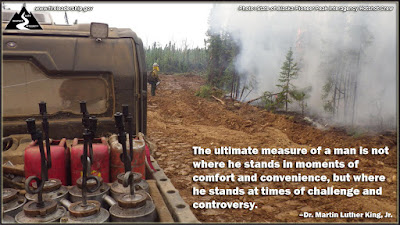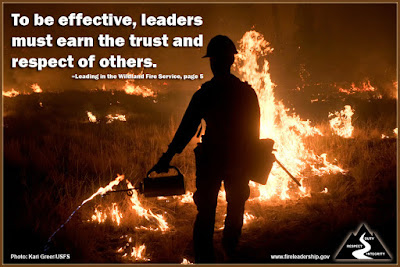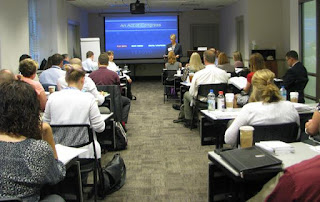 |
| (Photo credit: Brian Childs) |
Much of what we are shown our culture about leadership is depicted usually by a person which you don’t want to disappoint. We’re shown examples of leadership from many sources directly and indirectly. The common representations are a leader that has a short fuse ready to blow up and belittle our esteem being so easily triggered by our mistakes. This is what is accepted as normal and all we can expect. Is it effective? Somewhat, but is it ideal?
For most, this leadership trait is associated with many other leaders in our lives from parents to presidents. We are conditioned into thinking that this is what a leader is and does. Let’s explore what anger is and the affect this leadership method has on the team itself.
Anger has a spectrum from annoyance and frustration to rage and violence. In one end of the spectrum it can be a normal and healthy release of emotion and at the other, a blow up of damaging proportions. Generally, all anger is a resistance and intolerance. This can mean it may be a catalyst for change either better or worse than the current circumstances. What I mean by that is whether it benefits a majority or the self by releasing the emotion. When at the beginning end of the spectrum (frustration), voicing the intolerance can bring awareness to WHAT needs to change in order for a return to smooth sailing. When it occurs at the other end of anger’s spectrum (violence, rage), it loses its positive influence since what it does physiologically to self, others and overall atmosphere, is shut down that momentum of progress until there’s acknowledgement that it got out of control.
An overtly angry leader can think more optimistically, which sounds beneficial, but not in a way that promotes safety. Assignments can seem less risky and dangerous. Progress seems more likely to succeed even when faced with obstacles and incidents seem less likely. This method leads one to be more likely to make risky decisions, and make more optimistic risk assessments. This tendency allows that deadly “can do” attitude since the thought is that they can just force their subordinates to conform and make it happen regardless of the reality that it isn’t achievable for a multitude of reasons they’re unwilling to look at. Excessive anger carries with it a deception to self and others that puts everyone at undue risk. Over time, surviving the risks leads them to believe that it was all due to their skill of driving the crew. This is a common delusion of luck taking the place of skill.
Although it has some success in manipulating a desired outcome, it usually breeds contempt and disdain since it uses force. This is a one-way means of “top down” leadership and doesn’t open a pathway for receiving needed feedback from subordinates. The team is left feeling as though ruled by tyranny rather than having any ‘team’ atmosphere where everyone’s strengths or feedback have an opportunity to contribute to the whole. That can be effective, but only temporarily. Eventually crewmembers will become worn down and spiteful which will infect the whole and cause overall mutiny. The Leader will inadvertently create an atmosphere where no one is inspired to hold that position and always view that Leader as ultimately dysfunctional outside of any given duty. The ongoing result being that the leader is the only reliant source and thus a crutch. I feel that it is unrealistic and a weakness to only rely on one leader to constantly be the source of decisions, tactics and micro-managing.
Overly angry leaders deflect more than they take responsibility. They are more likely to demonstrate a bias or blame since they tend to rely more on stereotypes or singular assumptions, and pay less attention to details and more attention to the surface and therefore making snap judgements. This sort of focalized tunnel-vision often excludes critical information or details get ignored that expose that their behaviors are somewhat exaggerated.
They tend to anticipate future causes for them to be angrier building an overall pessimistic break down around them as if nothing is going to satisfy nor go ‘right’ according to them. All future actions seem to throw fuel to their fire of rage. That anger begetting further anger in that atmosphere. Even when accolades are deserved or partially given, the focus remains on what could’ve been more to their preference.
So with every complaint there must be a solution otherwise it’s just needless whining. Ideally, any Highly Reliable Organization functions with success by being a team or Leader of Leaders. In the circumstantial absence of the Leader, another can stand in as acting Leader with equal trust and respect from subordinates.
How do we accomplish this? Balance.
By no means do I intend to color anger as something that we avoid and even worse suppress. Much like fear, it can serve its purpose if acknowledged and processed by seeking its source in order to come to a healthy solution. It arises for good reason and that is to get our attention toward an issue in need of being added into our scope. Increasing our awareness will transform it to something positive and the emotion won’t arise in vain. It will demonstrate to the team that an effective leader has to be willing to be open in discussing difficult topics in order to build the team. I ask that we first examine if it is merely an issue within ourselves, or actually something externally in our environment or personnel that needs to be addressed, or both. Before we allow our anger to color our view of everything, answer it one situation at a time and move forward without projecting into our future. I ask us to consider what other methods are there? To swing the pendulum to the other extreme of “soft people-pleaser” wouldn’t necessarily achieve the goal since people will eventually manipulate that to their own selfish desires. What’s needed is a balance of both ends: Allowing ALL that arises in our shift, our tour, our season and individual personnel to be in our scope as well as standing firm on what’s best for the team by steering into a goal-oriented team that doesn’t mask over issues that inevitably build into larger issues.
Whenever you sense that there is anger arising in your team, engage with the hearts of your subordinates. Acknowledge the flame in the heart each individual that applies to a career in service work: compassion. Anger will occur. We cannot expect it to be absent when we are challenged in so many emotional and physical ways. Nobody is a victim to the career they ultimately chose, but it is our duty as leaders to alleviate the stresses of our work environment simply by showing empathy. Whenever you sense that anger is arising within you, take inventory of You. Delegate some of the responsibility by fostering the roles that your subordinates are hungry for. Allow some failures knowing that it is how we learn lasting lessons. Even though moments may seem daunting, address what comes up with openness for something good to come of it. We owe it them, ourselves, and the community we serve. Know that our individual emotional state is an active choice and not something that happens to us. Decide what emotion best fits the situation without ignoring what doesn’t fit into our ideal equation for success.
“In the end, it doesn’t matter how well we have performed or what we have accomplished—a life without heart is not worth living.” ― John Eldredge
*********************************
Thank you for the opportunity to share and discuss what we can all add to our tools to build a stronger force.
Sincerely,
Brian Childs
********************************************
Brian Childs began his career in 2002 with Utah DNR/FFSL. In 2011, he moved to Oregon where he works for a regional contract company as crew boss for one of four T2s. All thoughts and opinions above are those of the author and do not constitute the opinion of this site or the U.S. government.




























